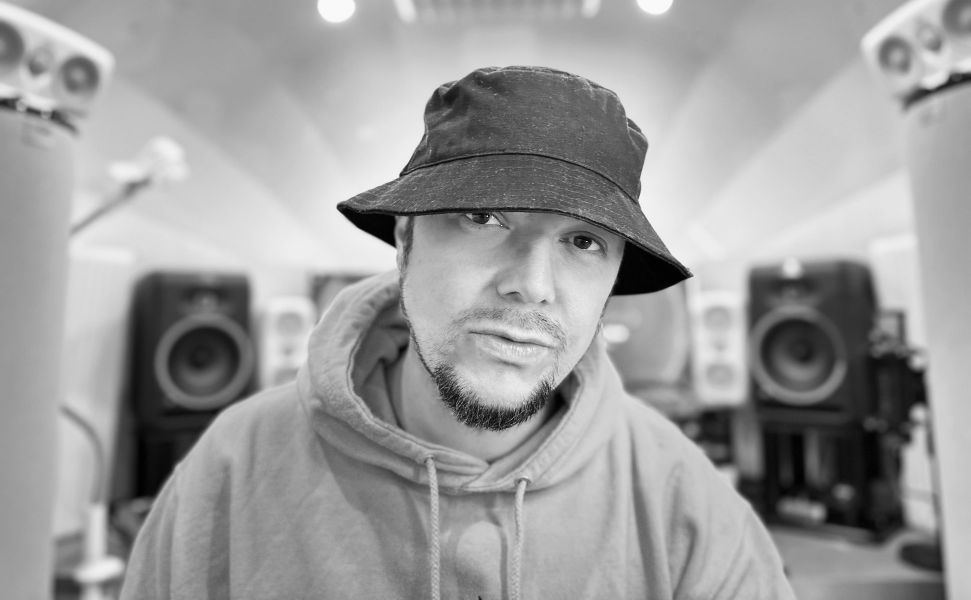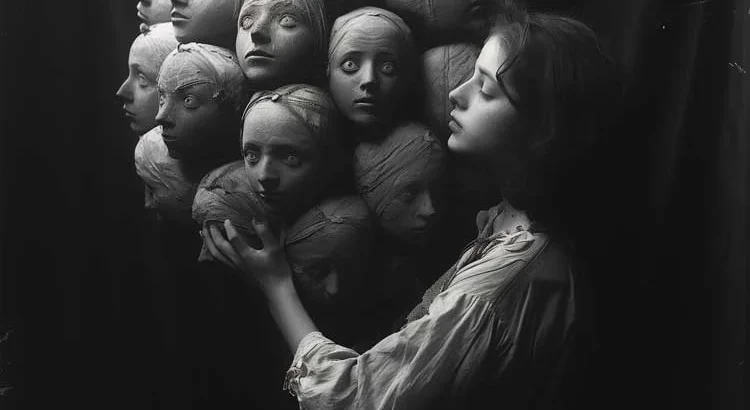Vilano – Dark pop has always been a genre of contrasts where melancholy meets melody, and vulnerability transforms into power. It thrives in emotional duality: heartbreak wrapped in glossy synths, darkness illuminated by glimmers of euphoria. But what makes dark pop truly resonate isn’t just its sound it’s its emotional architecture. Every great dark pop track, whether it’s from artists like Lorde, The Weeknd, or Ruelle, carries an emotional arc that feels cinematic. It moves listeners from shadows to light, taking them through tension, release, and emotional rebirth. Crafting emotional arcs in dark pop isn’t only about songwriting; it’s about designing a sonic journey that reflects the evolution of human emotion.
Table of Contents
The Emotional Blueprint of Dark Pop
Why Emotional Arcs Define the Genre
Understanding Darkness and Contrast in Sound
How Producers Shape Mood Through Texture
Building the Emotional Climb in a Song
The Cathartic Peak: Synths, Vocals, and Vulnerability
Lyrical Storytelling That Mirrors Human Emotion
Balancing Despair and Hope in Composition
Production Techniques for Emotional Transitions
How Emotional Arcs Build Listener Connection
Frequently Asked Questions About Emotional Arcs in Music
The Enduring Beauty of Emotional Storytelling in Sound
The Emotional Blueprint of Dark Pop

Every dark pop song starts with a feeling. It’s not just about the rhythm or the synth—it’s about emotion translated into sound. Unlike mainstream pop, which often focuses on simplicity and repetition, dark pop is structured around contrast. The genre pulls you into emotional depth before offering relief. Crafting emotional arcs in dark pop requires understanding how to build tension, sustain emotion, and resolve it naturally.
Elements that form the emotional blueprint include:
-
Minor keys that evoke introspection and melancholy
-
Lush synth layers that expand atmosphere
-
Cinematic pacing that guides emotional transformation
This structure turns music into storytelling. Each song becomes a chapter, and together they create an emotional novel where the listener feels every turn of the page.
Why Emotional Arcs Define the Genre
The essence of dark pop lies in emotional evolution. A good track doesn’t stay static—it moves. That movement, whether subtle or explosive, is what hooks listeners on a subconscious level. The emotional arc—from pain to empowerment, from longing to acceptance is what makes the genre timeless.
Listeners crave emotional depth because it mirrors life itself. When the music rises and falls, it reflects the human condition. That’s why crafting emotional arcs in dark pop remains essential—it turns sound into empathy and gives identity to the genre’s darkness.
Understanding Darkness and Contrast in Sound
Dark pop’s signature lies in its contrast: between heavy bass and soft vocals, between silence and explosion. These sonic opposites create emotional gravity. The use of reverb, distortion, and slow tempos gives depth to feelings of isolation or desire, while brighter synths or ethereal harmonies bring light into that same space.
Producers often create contrast by:
-
Layering airy pads over deep basslines
-
Combining fragile vocal tones with aggressive percussion
-
Shifting between minor and major progressions for emotional relief
This balance of opposites defines the genre’s psychology. Darkness isn’t just despair it’s a frame that highlights light when it finally appears.
How Producers Shape Mood Through Texture
In dark pop, production texture acts as emotion’s fingerprint. The way a synth vibrates or a snare echoes can completely alter how a listener feels. Crafting emotional arcs in dark pop involves building layers of sound that breathe and evolve with the narrative.
Producers shape emotional texture using:
-
Analog synths for warmth and nostalgia
-
Reverb-heavy vocals to create distance or intimacy
-
Gradual layering that mimics emotional intensity
Texture determines tone, and tone defines story. When producers manipulate space and resonance, they aren’t just crafting sound—they’re building emotional landscapes that listeners inhabit.
Building the Emotional Climb in a Song
Every emotional arc needs a climb—the build-up before release. In dark pop, this climb is often slow and hypnotic, allowing tension to accumulate naturally. The listener senses something approaching, even before it arrives.
To design an effective emotional climb:
-
Start with minimal instrumentation to create space
-
Introduce new layers every few bars to increase momentum
-
Use lyrical repetition to emphasize emotion without overexposure
This gradual evolution makes the eventual emotional release feel earned, powerful, and cathartic. It’s what makes crafting emotional arcs in dark pop so addictive—each rise feels personal, each climax transformative.
The Cathartic Peak: Synths, Vocals, and Vulnerability
The climax of a dark pop song isn’t always loud it’s emotional. It might come in a burst of layered synths, a vocal that suddenly breaks, or a lyric that feels like confession. This peak is where vulnerability meets production power.
Examples of emotional peaks include:
-
A sudden tempo shift that mirrors emotional revelation
-
Synth swells that mimic a cinematic rush
-
Vocals that crack or distort for authenticity
The best peaks don’t overwhelm they transcend. They pull the listener into a suspended moment where time, pain, and beauty converge. That’s the magic of crafting emotional arcs in dark pop—it transforms personal emotion into shared experience.
Lyrical Storytelling That Mirrors Human Emotion
Lyrics in dark pop often feel like diary entries set to neon lights. They speak of heartbreak, identity, transformation, and longing—universal emotions dressed in poetic minimalism. Crafting emotional arcs through lyrics means writing not just for sound, but for meaning.
Effective lyrical storytelling often includes:
-
Metaphors that capture internal conflict
-
Repetition to reinforce emotional themes
-
Shifts in tone from vulnerability to empowerment
Each lyric serves as a stepping stone in the song’s emotional progression. By the time the listener reaches the final verse, they’ve not only heard the story—they’ve lived it.
Balancing Despair and Hope in Composition
Dark pop thrives when despair and hope coexist. Too much sadness becomes heavy; too much optimism loses edge. The secret lies in equilibrium. Crafting emotional arcs in dark pop means blending sonic melancholy with glimpses of light.
Ways to achieve balance include:
-
Using uplifting chord progressions in minor tones
-
Layering hopeful melodies over dark rhythms
-
Ending songs with lyrical or harmonic resolution
Hope in dark pop doesn’t erase pain it gives it purpose. That duality makes the genre relatable and endlessly replayable.
Production Techniques for Emotional Transitions
Transition points—the shift between verses, drops, or bridges are where emotion breathes. Smooth transitions keep listeners engaged, making the journey seamless from start to finish.
Key production techniques include:
-
Automation of reverb and delay for gradual emotional shifts
-
Crossfades and echo tails that connect emotional beats
-
Dynamic contrast through volume swells or breakdowns
These transitions don’t just move the song forward; they create anticipation, making every change feel deliberate and cinematic.
How Emotional Arcs Build Listener Connection
When listeners feel an emotional arc, they internalize the song. It becomes personal. Crafting emotional arcs in dark pop transforms casual listening into emotional participation. Fans don’t just hear a track—they experience it. This connection explains why dark pop communities are so passionate and loyal.
Emotional resonance leads to:
-
Higher playlist retention and listener replay value
-
Stronger fan identification with the artist’s message
-
Greater storytelling potential for future releases
In an industry saturated with sound, emotional arcs make the difference between a song that plays and a song that stays.
The Enduring Beauty of Emotional Storytelling in Sound
Crafting emotional arcs in dark pop isn’t about formula—it’s about feeling. It’s the art of turning emotion into motion, sadness into energy, and introspection into connection. Every synth line, every whispered lyric, and every rise and fall contributes to that evolution from shadow to light. In the end, the best dark pop doesn’t just sound cinematic—it feels human. It reminds us that beauty and darkness often share the same space, and within that space, stories find their rhythm.
Frequently Asked Questions About Emotional Arcs in Music
What is an emotional arc in music?
An emotional arc is the journey of feelings a listener experiences throughout a song—from calm to tension to resolution.
Why is emotion important in dark pop?
Emotion defines dark pop’s identity. It transforms electronic production into something deeply human and relatable.
How can I create emotional tension in my track?
Use gradual layering, minor chords, and contrasting textures to build suspense before release.
Do lyrics or sound matter more in dark pop?
Both matter equally. Lyrics tell the story, while sound builds the emotion that gives the story life.
Can instrumental tracks still have emotional arcs?
Absolutely. Melodic movement, key changes, and tempo shifts can all convey emotion even without lyrics.



